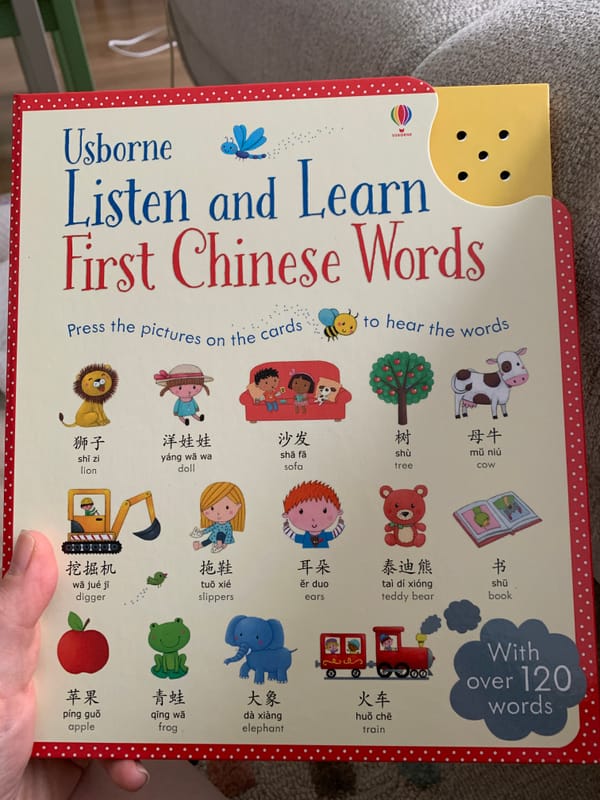Quick Summary
🧠 Key Principle: Comprehensible input
🎯 Main Focus: Understanding before production
⏱️ Time Investment: Daily exposure
📱 Best Tools: duChinese, TCB, Anki
🎵 Method: Natural acquisition through listening
💡 Success Factor: Consistent, easy-to-understand input
Looking for effective ways to learn Chinese? Forget textbook drills and endless character writing.
Modern language acquisition research shows a different, more natural path to fluency. And I am not only talking about theory, but als about my personal experience trying to master Chinese.
Follow along and find what works best for you.
Why Traditional Methods Often Fail
Chinese isn't harder than other languages. The problem is in how we're taught to learn it.
We often follow textbooks and try to memorise lists of vocabulary when learning a lanugage — this is not very effective learning any langauge, but when applied to a language as unfamiliar as Chinese, where you cannot deduce anything from the context, it makes the experience feel like unnecessary suffering.
Common Mistakes:
- Focusing on memorizing grammar rules
- Trying to translate everything to English
- Obsessing over perfect tones from day one
- Learning vocabulary lists without context
- Spending too much time writing characters

The Science Behind Natural Learning
Comprehensible Input: The Key to Success
Children learn their first language through understanding meaningful messages, not through studying grammar. This same principle applies to learning Chinese as an adult.
What is Comprehensible Input?
Comprehensible input means exposure to language that you can mostly understand, even if some parts are new. Think about how children learn their first language - they constantly hear language slightly above their level, supported by context, gestures, and visual cues.
Key Principles:
- You should understand about 90-95% of what you hear/read
- New words and patterns are learned naturally through context
- No translation or grammar study needed
- Understanding comes before speaking
Why It Works
Dr. Stephen Krashen's research shows that we acquire language best when we focus on understanding messages, not memorizing rules. It's like learning to ride a bike - you learn by doing it, not by studying the physics of cycling.
Signs You're Getting Good Input:
- You can follow the main idea without translation
- Context helps you guess new words
- You don't feel overwhelmed
- It feels easy — you should be able to listen to it without focusing too much
How to Apply This to Chinese
Find content where you understand most words but not all. Start with materials designed for beginners and gradually move up.
Best Sources of Comprehensible Input:
- Children's shows (they speak clearly and repeat often)
- Graded readers (stories written for your level)
- YouTube videos for Chinese learners
- Simple podcasts with transcripts
Making Input Comprehensible:
- Use subtitles initially
- Slow down video playback to 0.75x speed
- Watch/listen multiple times
- Focus on understanding, not memorizing
- Choose topics you're interested in
Spaced Repetition: Remember More With Less Effort
Spaced repetition is a learning technique that works with your brain's natural memory patterns.
Imagine trying to remember a friend's phone number - you might forget it after a day, but if you review it just before forgetting, it sticks longer next time. This is exactly how spaced repetition works.
How Memory Works:
- We forget things gradually over time
- Reviewing just before forgetting strengthens memory
- Each review makes the memory last longer
- Traditional cramming doesn't create lasting memories
Why It's Perfect for Chinese
Learning Chinese requires memorizing many new patterns that don't exist in English. Spaced repetition helps you remember characters and words efficiently, without wasting time on endless repetition.
What to Review with Spaced Repetition:
- Characters you encounter in your reading
- Words from shows you watch
- Phrases you want to use often
- Grammar patterns that confuse you
Using Spaced Repetition Tools
Anki is the most popular tool for this because it automatically calculates optimal review times. It shows you cards just when you're about to forget them.
Tips for Using Anki:
- Review cards daily (15-20 minutes is enough)
- Only add words you've encountered naturally
- Include context in your flashcards
- Use audio when possible
- Don't add too many new cards at once
Common Mistakes to Avoid:
- Adding too many cards per day
- Learning words you don't need yet
- Ignoring review notifications
- Making cards too complicated
Want more research-based tips on raising multilingual children?
Join our community:
What Actually Works
1. Get Lots of Easy Input
Your brain needs to hear the same patterns multiple times to internalize them. Children's content is perfect for this because it's designed for language learning.
Best Content for Beginners:
- Peppa Pig in Chinese (on Netflix)
- „Comprehensible input Chinese“ content on YouTube
- Little Fox Chinese stories on Youtube
- Basic nursery rhymes
2. Practice Smart
Don't worry about speaking perfectly from day one. Focus on understanding first, then gradually start producing language.
Find a teacher that is comfortable teaching using comprehensible input aproach and is willing to speak to you only, or mostly, in Chinese.
Look for someone who knows how to slow down and use easy words and grammar structures in a natural way.
To enhance your studies further, try to write few sentences a day in Chinese — this will allow you to practice vocabulary you actually need to talk about your day and improve the knowledge of Chinese characters.
Effective Practice:
- Have conversation practice 1-2 times/week
- Write simple sentences daily
- Learn grammar as you encounter it
- Use ChatGPT for corrections
3. Use the Right Tools
Some apps are much more effective than others. Focus on tools that provide comprehensible input and spaced repetition.
Recommended Apps:
- DuChinese: Graded reading
- TCB (The Chairman's Bao): Simple news
- Chineasy: Character learning
- Anki: Flashcard review
Avoid:
- Duolingo (too translation-focused, boring, ineffective)
- Random vocabulary apps
- Traditional textbooks
Daily Learning Routine
Keep it simple and consistent. Even 30 minutes a day can make a big difference if you use the right methods.
Prioritise listening and reading: if you have limited time, focus on getting enough listening practice.
Simple Daily Plan:
- Morning: 15 min listening + 5 min Anki
- Commute: Listen to Chinese content
- Evening: Write 2-3 simple sentences
- Before bed: One easy article on DuChinese
Tips for Success
Focus on understanding and consistency. Don't try to be perfect from the start.
Do:
- Get lots of easy listening practice
- Learn vocabulary in context
- Write simple sentences daily
- Use ChatGPT for corrections
Don't:
- Obsess over tones initially
- Memorize grammar rules
- Learn random vocabulary
- Focus too much on writing
Using ChatGPT Effectively
ChatGPT can be like having a patient tutor available 24/7. Use it wisely to support your learning.
Best Ways to Use ChatGPT:
- Have a simple conversarion — make to start by prompting ChatGPT your level
- Check your sentences after writing
- Get grammar explanations
- Practice simple conversations
- Understand patterns you notice

Key Resources for Beginners
Start with easy materials and gradually increase difficulty as your understanding improves.
For Listening:
- YouTube "Comprehensible Chinese" channels
- Children's shows in Chinese
- Simple podcasts for learners
- Chinese learning songs
For Reading:
- The Chairman's Bao
- DuChinese graded readers
- Children's stories with pinyin
- Simple comics with pinyin
Frequently Asked Questions
How does understanding Chinese characters contribute to learning the language?
Understanding Chinese characters is crucial for grasping the written language, as they represent words and are deeply rooted in Chinese culture and history. It's a fundamental aspect of learning the language.
Why is tone important in Mandarin Chinese?
Mastering the tones in Mandarin is essential for accurate communication as incorrect tones can lead to misunderstandings. Each tone determines the meaning of words, making it crucial to pay attention to tone when speaking Mandarin.
Can media like children's shows really help with language learning?
Absolutely, children's programs can significantly aid in language learning by providing immersive contexts for everyday vocabulary and enhancing listening skills through repetition and clear scenarios.
What are the benefits of using apps like Duolingo for learning Mandarin?
Using apps like HelloChinese can make learning Mandarin engaging with game-based activities and improve speaking skills through speech recognition technology. It's a great way to enhance your language learning experience.
Why is writing important when learning a spoken language like Mandarin?
Writing is important when learning a spoken language like Mandarin because it reinforces language structures and word order. Since same sounds can be written using different characters and therefore have different meanings, it is crucial for language progression to develop basics reading and writing skills (at least using a digital keyboard)










Member discussion